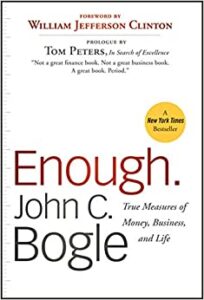Executive Summary
Enjoy the current installment of “Weekend Reading For Financial Planners” - this week’s edition kicks off with the news of President Biden’s executive order creating a “Whole-of-Government” policy on digital assets, which (despite its high ambitions for protecting investors, the financial system, and national security) contains few specifics other than setting high-level objectives and ordering over two dozen government agencies to collaborate on filling in the details…. Meaning that concrete regulation on cryptocurrency (and how financial advisors can incorporate it into their services) may be even farther off than hoped.
Also in industry news this week:
- The SEC examined 16% of the approximately 15,000 SEC-registered RIAs last year, but it may have trouble continuing that pace as RIA firms continue to grow in number while the agency’s examination staffing levels remain flat
- A new research study from Vanguard shows that over 90% of clients of human advisors would not consider switching to a robo-advisor (though there may be future advantages for advisors who integrate digital investment management with human advice)
From there, we have several articles on investments:
- Why TIPS funds do not necessarily go up in value during periods of high inflation, and alternate inflation hedges advisors can consider for their clients
- The tax implications of investing in cryptocurrencies, and how advisors can help ensure their clients’ gains and losses are reported correctly
- How direct indexing has transitioned from a tool of the ultra-wealthy to a strategy available to a wider range of advisors and their clients
We also have a number of articles on practice management:
- Why companies are finding new ways to show their appreciation to employees (and to customize that recognition in a way that will resonate best with each employee)
- Why advisory firms should focus on encouraging and rewarding their ‘star’ performers in proportion to the value they bring to the company (and not necessarily try to treat every employee equally)
- How moving talented employees to new areas or roles within an organization (rather than keeping them in one place) can help organizations better retain top performers as well as attract and breed new talent
We wrap up with three final articles, all about how to live a better life:
- How a ‘reverse bucket list’ can help advisors and their clients discover what is most likely to lead to a lifetime of happiness
- How advisors can help clients better relate to their ‘future selves’ in order to encourage better financial habits today
- The seven books that changed one author’s life, and their lessons on how to become a better person
Enjoy the ‘light’ reading!
Biden's Digital Assets Directive Fails To Provide Clarity For Advisors
(Mark Schoeff | InvestmentNews)
For the last several years, financial advisors have viewed digital assets such as cryptocurrencies as both an opportunity and a challenge. On the one hand, the explosion of growth in both the value of certain cryptocurrencies (like Bitcoin) and the number of different digital assets available has captured the attention of many everyday investors, and increased the value of professionals who can give good advice on how to develop an investment strategy around cryptoassets. On the other hand, the relative newness of digital assets – along with their inherently decentralized nature – means that much of the infrastructure and regulation that exists surrounding traditional assets is nonexistent (or at the very least, fragmented and disorganized) when it comes to cryptocurrency, which introduces risks for financial advisors who are considering whether to invest client assets outside the traditional lines.
So far, the government’s regulatory approach toward cryptocurrency has been limited and piecemeal. While the SEC has generally contended that cryptocurrency falls under its regulatory umbrella as securities (since cryptocurrencies are often marketed as investments), there has also been debate as to whether it should also be regulated as a commodity (which the CFTC oversees) or in the same way as money in a bank account (which is the FDIC’s jurisdiction). All of which has made it difficult for advisors to answer the basic questions – such as how digital assets will be treated in regards to the SEC’s RIA custody rule (and how they can be safely stored in the meantime), how to properly trade and report on cryptocurrencies in client portfolios, and when ETFs and mutual funds will be allowed to invest directly in cryptocurrencies – that are currently blocking them from incorporating digital assets into their client portfolios.
On March 9, President Biden signed an Executive Order aimed at taking a “Whole-of-Government” strategy to developing and regulating cryptocurrency that is intended to align multiple government agencies towards the same basic goals. The order aims high in its intentions: Among other things, it calls for measures to protect consumers and investors from the risks of speculation and fraud in cryptocurrency; to protect against systemic risks to businesses and the financial system; and to mitigate national security risks posed by the “illicit use” of digital assets. Notably, one of the drivers of the Executive Order appears to be concerns that recent sanctions against Russia might be circumvented via cryptoassets – such that government regulation of crypto becomes a ‘necessity’ to ensure that sanctions hold – though the scope of the Executive Order is ultimately far broader in creating more uniform regulation of crypto.
But other than defining these overall goals for the government’s strategy, there is little in specific details as to how digital assets should be regulated. Rather, the order directs the numerous government entities involved – which number over two dozen different Cabinet departments and other agencies – to coordinate on bringing the strategy to fruition. And given the sheer number of different stakeholders (which also includes industry lobbyists and lawmakers), it could – optimistically – be years before a whole-government strategy is agreed upon, never mind actually implemented.
So, for advisors hoping for more concrete regulation before advising clients on cryptocurrencies, it appears that the wait will continue. In the meantime, advisors hoping to incorporate digital assets must continue to rely on the fragmentary guidance on compliance (and tax issues) that exists today.
SEC Examines 'Only' 16% Of RIAs, And It's Not Likely To Go Higher
(Mark Schoeff | InvestmentNews)
Each year, the SEC conducts examinations of SEC-registered RIA firms for compliance with its regulations. The percentage of registered firms examined varies from year to year, but over the past two decades it has hovered in the 10%-20% range, meaning that on average, between one in five and one in ten SEC-registered firms are examined each year.
And the latest data from the SEC shows that the trend continued in 2021, with 16% of the approximately 15,000 SEC-registered firms being examined. This percentage actually exceeded the agency’s target examination rate of 15%, but according to the acting director of the SEC’s Division of Examinations, it will be difficult in future years to continue to maintain even their current rate of examinations. Because, while the number of RIAs has steadily increased over the years – there are about 5,000 more SEC-registered firms than there were just 10 years ago, a nearly 50% increase – the SEC’s examination staff levels have remained fairly flat due to funding shortages, so the capacity to examine firms in the future is struggling to keep pace with the industry’s continuing growth.
To combat its capacity problems, the SEC has worked to become as efficient in its examinations as possible, switching to remote examinations during the pandemic, and focusing on targeting its main priorities (such as Regulation Best Interest compliance, cybersecurity, and ESG strategies) to get the most effectiveness out of the examinations it can conduct. But ultimately, as the industry grows – by the creation of new firms, the conversion of broker-dealers to the RIA model, and the ‘graduation’ of state-registered firms to SEC registration – and the SEC’s existing examiners reach their capacity limits, the agency will simply need to add more bodies (and more funding) in order to maintain its target examination rate, or risk the rate falling even lower (which raises concerns about whether the threat of SEC audits will still be an effective deterrent from misbehavior?).
A Vanguard Paper That Financial Advisors Will Love To Read
(Michael Thrasher | RIA Intel)
When digital investment services (a.k.a. “Robo-Advisors”) first came on the scene over a decade ago, many (human) financial advisors considered them a threat to the existing advice model. As the thinking went, if platforms like Betterment or Wealthfront offered automatically managed investment portfolios at only a quarter of the cost of a human advisor’s fee, human advisors would need to slash their fees – or else risk their clients flocking to the cheaper alternatives.
In the years since, however, the numbers have not borne out this doomsday scenario. The “fee compression” that many advisors expected to result from the rise of robos never materialized, and in fact many advisors (at least those who focus on financial advice, rather than financial products or standalone investment management) have been able to raise their fees in the past decade. And yet, for some advisors, digital advice still looms as a perceived threat, especially as huge institutions like Vanguard use their scale to combine robo offerings with access to personal advice at a low fee and thus providing ‘real’ low-fee competition to the advice-centric business model.
All of which makes it interesting that Vanguard itself – which has aggressively expanded its robo-plus-human-advice offering in direct competition with many of the advisors who use Vanguard products – has released a new research paper representing one of the first attempts to quantify investors’ views of human versus robo-advice. And the study’s headline results, it appears, bode well for the future of human advice: of the 1,500 investors surveyed who reported having a human and/or a digital advisor, over 90% of human-advised clients reported that they would not consider switching to (only) a digital advisor in the future, while 88% of ‘only’ robo-advised clients reported they would consider switching to a human advisor.
While the study seems to be good news for human advisors for the time being – since it definitively shows that most human advisor clients have no plans to switch to digital – it still remains to be seen how digital advice will create pressure for future clients who currently have no advisor (a cohort that was notably missing from Vanguard’s study). Because, as the study shows, investors do seem to prefer digital advisors for some of the more technical aspects of investment management, such as cohesive portfolio management, tax management, and diversification.
Meaning that, in the future, it’s possible that human advisors who focus on building trusting relationships and meeting the client’s needs while integrating digital portfolio management into their practice – or who cease to offer investment management altogether to let clients take advantage of the components of digital advice that they prefer – may be best positioned for the best of both worlds, in which they can offer what clients value most both in the human and digital advice realms. And that to the extent that consumers do adopt digital tools first, they appear to be an on-ramp to working with human advisors later (as the investor’s financial life becomes more complex?).
Why Are Inflation-Protected Bond Funds Losing Money?
(Tom Lauricella | Morningstar)
With inflation rates reaching levels not seen in decades, many investors are likely considering how they can hedge their portfolios against inflation (and many advisors might have already received calls from nervous clients!). One potential option is to invest in Treasury Inflation-Protected Securities (TIPS), which adjust the amount due to investors based on changes in the Consumer Price Index (which measures inflation) so that investors receive a greater return when inflation rises. As a result, investors have both bought TIPS directly in recent months, as well as investing into TIPS via mutual funds and ETFs.
As inflation expectations rose in the second half of 2021, the value of TIPS funds rose with it. However, despite continued high inflation, the performance of TIPS funds declined at the start of 2022, before rebounding somewhat in late February, potentially frustrating investors seeking an investment to hedge against inflation (particularly because not only did the value of TIPS funds decline in nominal terms, but the real return was even worse given the elevated inflation levels!).
One reason for this effect is that while current inflation remained elevated, investors began to expect inflation to cool off in the future (making TIPS funds less attractive), perhaps because of the Federal Reserve’s pullback on buying bonds and potential interest rate hikes. In addition, the yields on regular Treasury bonds have been rising in 2022, putting further downward pressure on TIPS prices (as, like regular bonds, changes in interest rates can affect the value of TIPS funds). So while investing in TIPS funds can act as a hedge against inflation, they typically fare best in periods of high inflation expectations rather than actual inflation.
Of course, other potential inflation hedges are available in addition to TIPS, including I-Bonds (which currently offer an annualized 7.12% Composite Rate, and don’t face the same kind of bond fund price volatility), as well as Social Security (whose annual cost-of-living adjustments help retirees combat inflation). In addition, now could be a good time for advisors to discuss the inflation-hedging benefits of delaying Social Security benefits with clients who have yet to claim! The key point for advisors managing client portfolios, though, is that while TIPS funds can serve as an imperfect inflation hedge when held over time, buying them when inflation is already high does not guarantee strong returns going forward, as in the end TIPS funds are still bond funds, which means their return can vary based on bond market dynamics (in addition to the raw changes of their inflation-linked yield!)!
6 Things RIAs Need To Know About Taxes And Crypto
(Flourish)
Investing in cryptocurrencies such as Bitcoin has become increasingly popular as the prices of many of them have skyrocketed over the past several years. However, the sizable gains earned by some investors have drawn the attention of the IRS, making it important for cryptocurrency investors to be aware of the tax consequences of these investments.
In most ways, investing in cryptocurrencies in a taxable account is similar to buying other assets, such as stocks or bonds. For example, the short- and long-term capital gain rates and holding period rules are the same for cryptocurrencies as these other assets. However, calculating these gains (or losses) can be more difficult when investing in cryptocurrencies, because many of the largest cryptocurrency trading platforms and custodians (who also are responsible for keeping cryptocurrency holdings secure) do not issue clients 1099 forms (which report taxable transactions during the year). In addition, cryptocurrency trading platforms often do not track tax lots automatically, putting the burden on investors to track individual lots to calculate their capital gains or losses. And it is also worth noting that sales are not the only transaction that can create a tax burden; for example, purchases of goods or services made with cryptocurrencies (e.g., NFTs) also triggers a capital gain or loss (based on the price when the cryptocurrency was acquired and when it was used for the purchase).
Notwithstanding the tax complications created by cryptocurrency investments, though, cryptocurrency investors do benefit compared to stocks and bonds (at least for now) because they do not have to worry about wash sales. The Wash Sale Rule, which prevents investors with a loss from selling their investment and repurchasing it in short order, currently does not apply to cryptocurrencies (although the American Families Plan proposed last year would eliminate this benefit) allowing investors to sell any cryptocurrency whose value has fallen below the purchase price (creating a capital loss) and immediately repurchasing it (at least until the government closes this ‘loophole’).
Ultimately, the key point is that while cryptocurrencies are often touted as a way to conduct transactions out of the reach of governments, the IRS still treats these transactions similarly to other investments being bought and sold. And so, advisors can help clients with cryptocurrency holdings avoid tax trouble by ensuring that they report their gains (and losses) appropriately!
The Rise Of Direct Indexing
(Ryan Neal | FinancialPlanning)
Direct indexing has, for many years, offered the opportunity to invest in the underlying securities of a passive index, allowing them to sell individual securities whose prices have declined and harvesting the losses for tax purposes. This is an advantage compared to investing in the index itself (through a mutual fund or ETF) because while the index itself might have gone up in value, the prices of at least some of the underlying securities are likely to have declined.
However, this strategy was typically limited to high-net-worth investors, who could afford the transaction costs involved in direct indexing (particularly at a time when investors were charged a commission for each trade) and had the assets to purchase whole shares of each underlying stock at the appropriate weight (at a time when fractional share trading was not available). But thanks to advances in trading technology (and $0 commissions on trades), direct indexing has undergone a dramatic evolution, transitioning from a tax strategy for high-net-worth individuals towards a strategy with a wider range of uses and potential users, attracting new providers (and established asset managers) into the field in the process.
And direct indexing appears to be on a strong growth trajectory, with a Cerulli Associates study (sponsored by direct indexing provider Parametric) estimating a 12.4% growth rate for direct indexing between 2021 and 2026, compared to an expected 11.3% growth rate for ETFs and 3.3% growth for mutual funds. This is likely due in part to the broader range of uses for direct indexing beyond the tax benefits (which, in addition to loss harvesting, include gains harvesting, identifying securities for charitable giving, and maximizing the step-up in basis at death) to creating personalized indexes (based on Environmental, Social, and Governance [ESG] factors or other client preferences), rules-based strategies (where advisors can create custom factor-based strategies without having to pay fees for the underlying mutual funds or ETFs), and custom indexes (for clients who want to invest around a concentrated position).
And so, while direct indexing has the potential to decrease advisor and investor dependence on mutual funds and ETFs, the success of these platforms is likely to depend in part on their ability to provide the most advanced tools for specific use cases at a cost commensurate with its benefits. But whether or not direct indexing displaces legacy investment vehicles, its expanded use cases, increased outside funding into direct indexing providers, and growing platform capabilities suggest that direct indexing is here to stay… the only question is what particular version of it gains the most traction?
Why Your Boss Wants To Know Your Love Language
(Emma Goldberg | New York Times)
The tight labor market is making it harder than it has been in many years for employers to hire and retain employees. The obvious way to attract talent is to raise pay, but higher salaries can only help up to a point – other companies can also increase their pay, and an upward price spiral for talent could quickly become unsustainable.
Furthermore, higher pay on its own might not be enough to keep employees satisfied if those employees do not feel valued or appreciated in their work. After all, money is nice, but there are other factors that contribute to wellbeing. For instance, as Kitces research has shown, feeling appreciated is one of the factors that most strongly correlates with wellbeing among financial advisors. And when workers do feel appreciated, they may be less likely to feel burned out, struggle in their career development, and ultimately leave for better opportunities.
The trick to showing appreciation, however, is doing so in a way that resonates with the employee and actually makes them feel appreciated. For one thing, the recognition should show some genuine thoughtfulness on the part of the person giving it – one survey, which asked for employees’ strangest forms of recognition, received responses like expired gift certificates, misspelled plaques, and a foam tombstone(?!), showing that finding the ‘right’ form of appreciation isn’t every employer’s strong suit. And more generally, the reality is that not all employees appreciate the same types of recognition – for instance, one person may find public recognition in front of the company gratifying to be acknowledged, while another who is shyer finds it mortifying to be in the spotlight.
Ideally, then, recognition should be in the form of something the employee really values. For some workers, the most effective form of recognition may be a verbal interaction of appreciation (publicly or privately, depending on the individual); for others, it could be a handwritten thank-you note. Still others might feel the most appreciated with a small gift, like a cup of coffee or candy bar.
In any case, it is important for employers to get a sense of how valued their employees feel in their work, and what forms of recognition would best help to boost that feeling. Understanding this “language of appreciation” can help lead to employees that are happier, more confident, and who stick around for the long term.
Look To The Stars
(Philip Palaveev | Financial Advisor)
A common adage known as the Pareto Principle states that, for many outcomes, 80% of the consequences stem from 20% of the causes. For instance, many financial advisors find that 80% of their profits come from the top 20% of their clients. Likewise, in venture capital, (at least) 80% of the returns come from just 20% of the companies the firm invests in.
Another version of the Pareto Principle applies to advisor productivity, where the top 20% of advisors are responsible for 80% of the revenue growth at a given firm. And while these ‘stars’ are naturally vital to firms on account of the revenue they generate, they may also bring less-tangible benefits such as being better able to imagine and implement new ideas, and setting an example of higher personal standards that catalyzes other employees into higher performance.
So, as Palaveev writes, advisory firms should make decisions about firm culture, distributing opportunities, and setting compensation and ownership structures around not just supporting all team members, but specifically encouraging and developing their star performers. This is because deep down, it matters to these performers that they are recognized for their high achievements, and they will be likely to jump ship to a competitor if they feel they can better find that recognition elsewhere.
Most notably, as Palaveev observes, the incentive with the highest potential upside for top performers is ownership in a firm. However, firms that already have a large ownership base – or who have outside investors such as private equity owning an outsized percentage of the firm – may be limited in how much of an ownership stake they can offer. So as outside equity becomes a bigger and bigger part of the RIA industry, it may be possible that firms have a more difficult time keeping their ‘star’ performers – who ultimately may only be able to truly realize an ownership stake in proportion to their production by founding their own firm to star in, if the firm is not structured to afford them the opportunity in the future.
Let Your Top Performers Move Around The Company
(Kevin Oakes | Harvard Business Review)
It is natural – and a common practice – to think that, when an employee thrives in a particular part of an organization, they should stick to that area to make the best use of their talents. In reality, however, studies have shown that moving employees into different roles can be an effective way to both improve employee retention and development, and to enhance company performance in terms of revenue growth and profitability.
Such “talent mobility”, as Oakes writes, is often the sign of a healthy organization that understands how to “identify, develop, and deploy talent to meet the needs of the business”. For employees, movement is often a sign of career advancement – even if the movement may be lateral, the ability to learn new skills and make new connections within the company can create new opportunities for employees to develop and use their talents.
Mobility can also be useful in times of economic uncertainty, such as when the pandemic caused companies to implement hiring freezes that meant open roles could only be filled by internal talent. Furthermore, it can benefit growing organizations – who may need to quickly pivot to switch priorities or seize new opportunities – to rapidly deploy talent in new areas without waiting for an external hire.
In any case, the key is often for a business to proactively look for opportunities to move talented employees into new roles. Doing so helps the company avoid stagnation, improve retention by fostering ongoing career development, and recruit more talent by displaying continuing opportunities for advancement. For managers and executives, then, though the short-term urge to keep top performers in place may be strong, developing a culture of mobility can keep those employees with the business in the long run, while constantly creating opportunities to attract and breed new talent to keep the organization moving forward.
Forget Bucket Lists
(Jeff Steen | Inc.)
Many individuals make a ‘bucket list’ of especially meaningful experiences they want to have before they ‘kick the bucket’. This can be a way to focus one’s time and attention on the things that seemingly matter the most to the individual.
But while it might be satisfying to cross off a completed bucket list item, having a long list of ‘wants’ can prevent an individual from having a feeling of deep satisfaction (because there will often be more ‘wants’ that they cannot ever fulfill). In fact, the author Arthur Brooks created an equation to explain this phenomenon, where satisfaction equals what you have divided by what you want. Using this formula, it is clear that the more ‘wants’ a person has, the less satisfied they will be.
And so, Brooks suggests that individuals create a ‘reverse bucket list’ by listing out their wants, which could be material (e.g., buying a Ferrari) or experience-based (e.g., taking a trip to Thailand). He then asks individuals to imagine what their best life would look like in five years and consider the forces that would bring them to that place. Inevitably, he personally finds that the forces that will bring him happiness are intrinsic (i.e., coming from within and revolving around love, relationships, happiness, and deep purpose) rather than extrinsic (e.g., the admiration of others or material objects). Using this technique, he is able to see that his original list of wants is unlikely to be the true driver of his happiness going forward.
The key point is that while spending money on luxury items or taking exotic trips should not necessarily be avoided (particularly if spending on experiences that include loved ones), an individual can potentially improve their happiness by limiting their list of ‘wants’ to the things that truly matter to them when they vision their future selves. And for advisors, developing intrinsic, rather than extrinsic, motivations can be rewarding, both personally and financially!
How Thinking About 'Future You' Can Build A Happier Life
(David Robson | BBC Worklife)
On a conceptual level, it’s easy to understand that there will be a ‘future you’ that will eventually exist, whether it’s one month, one year, or 30 years down the line. But while individuals recognize that they will have a ‘future self’, it can be challenging for many people to recognize that person as themselves (just older) rather than as a ‘distant’ stranger who they know nothing about.
And it turns out that the ability to relate to one’s future self has important repercussions. Research has shown that those who better relate to their future selves take more actions today that will benefit their future selves, such as saving money or exercising, than those who relate less well. In fact, in one study, those who were better able to identify with their future selves experienced better life satisfaction when surveyed ten years later than those who struggled to relate to their future selves (even when controlling for initial wellbeing).
Given that saving and investing for the future are key aspects of a sound financial plan, advisors can consider using exercises with clients to assess and improve their ability to relate to their future selves. To start, it can help to have clients rate themselves on how connected they feel to their future selves. And for those clients who have a difficult time relating to their future selves (or just want to improve), research has shown that individuals who are shown images of themselves that are digitally altered to make them look older show improvement in their ability to relate to their future selves. Another option is to have the client write a letter to their future selves outlining their goals for the future, as clients will find it much more difficult to ignore whether they have been taking steps towards their goals when they’re effectively being held accountable to the expectations set (and written out!) by their younger selves to themselves.
The key point is that while it is common for clients to have a hard time figuring out what their future goals will be, simply being able to relate to their future selves can bring significant benefits. (And given these benefits, advisors might also consider evaluating and improving their ability to relate to their future selves as well!)
Seven Books That Make You A Better Human
(Darius Foroux)
Books can affect people in different ways. Some books entertain, while others inform, and certain books can inspire. And for Foroux, seven books have changed his life and behavior.

 The Dawn Of Everything, written by anthropologist David Graeber and archaeologist David Wengrow, helps explain the complexity of human history. Rather than offering simplified narratives, the book demonstrates that it is impossible to make generalized claims about humans. And for those who want to further consider humans’ place in the world, The Art Of Living, by the monk Thich Nhat Hanh, discusses the concept of impermanence, epitomized by the quote “Impermanence means that nothing remains the same thing in two consecutive moments”.
The Dawn Of Everything, written by anthropologist David Graeber and archaeologist David Wengrow, helps explain the complexity of human history. Rather than offering simplified narratives, the book demonstrates that it is impossible to make generalized claims about humans. And for those who want to further consider humans’ place in the world, The Art Of Living, by the monk Thich Nhat Hanh, discusses the concept of impermanence, epitomized by the quote “Impermanence means that nothing remains the same thing in two consecutive moments”.
 For readers who want to learn more from those around them, Too Soon Old, Too Late Smart, written by psychiatrist Gordon Livingston, offers lessons for a good life based on the experiences of himself and his patients. As the title indicates, Livingston suggests that learning things too late can be a tragedy, instead recommending that we listen to the advice of others with experience. On the other side of the coin, for individuals who want to have the freedom to move beyond what they think is expected of them by others, philosopher Jiddu Krishnamurti argues in Freedom From The Known that all humans are equal and that individuals should avoid always looking to authority figures for guidance.
For readers who want to learn more from those around them, Too Soon Old, Too Late Smart, written by psychiatrist Gordon Livingston, offers lessons for a good life based on the experiences of himself and his patients. As the title indicates, Livingston suggests that learning things too late can be a tragedy, instead recommending that we listen to the advice of others with experience. On the other side of the coin, for individuals who want to have the freedom to move beyond what they think is expected of them by others, philosopher Jiddu Krishnamurti argues in Freedom From The Known that all humans are equal and that individuals should avoid always looking to authority figures for guidance.

 For perspective on money and its limits, Enough, written by Vanguard founder John Bogle, examines what it means to have ‘enough’ in a world often focused on money and status. And for a look back at ancient wisdom, readers can examine A Manual For Living, by the Stoic philosopher Epictetus, which offers lessons and reflections on how best to live with serenity and joy.
For perspective on money and its limits, Enough, written by Vanguard founder John Bogle, examines what it means to have ‘enough’ in a world often focused on money and status. And for a look back at ancient wisdom, readers can examine A Manual For Living, by the Stoic philosopher Epictetus, which offers lessons and reflections on how best to live with serenity and joy.  In a similar theme, Yes To Life, by psychiatrist and Holocaust survivor Viktor Frankl, advises readers to ask themselves “What does life expect of me” rather than “What can I expect of life” and suggests that every crisis a person might experience contains opportunity.
In a similar theme, Yes To Life, by psychiatrist and Holocaust survivor Viktor Frankl, advises readers to ask themselves “What does life expect of me” rather than “What can I expect of life” and suggests that every crisis a person might experience contains opportunity.
Ultimately, whether you are looking for a good book to read on vacation or need some inspiration for your career, hopefully one of these books (or other recommended titles) will speak to you!
We hope you enjoyed the reading! Please leave a comment below to share your thoughts, or make a suggestion of any articles you think we should highlight in a future column!
In the meantime, if you're interested in more news and information regarding advisor technology, we'd highly recommend checking out Craig Iskowitz's "Wealth Management Today" blog, as well as Gavin Spitzner's "Wealth Management Weekly" blog.







Leave a Reply